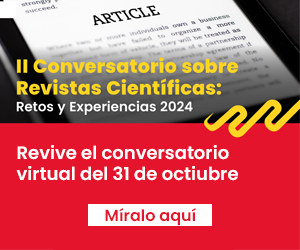Modifications of eating behavior, physical activity and mental health due to COVID-19 quarantine in young adults
DOI:
https://doi.org/10.20453/rmh.v33i1.4164Keywords:
Coronavirus infections, quarantine, eating behavior, motor activity, mental healthAbstract
In Peru, one of the first interventions to flattened the epidemiologic curve of the pandemic was quarantine that changed eating behavior, physical activity and mental health of the population. Objective: to determine modifications in eating behavior, physical activity and mental health in young adults before and after the quarantine. Methods: cohort study involving 384 adults from 18 to 24 years of age that were subjected to a virtual interview and application of an international questionnaire to evaluate changings in eating behavior, physical activity and mental health contrasted by Chi square. Results: an increase in the distribution of daily foods [breakfast (p<0.001), morning snack (p<0.05), lunch (p<0.001), afternoon snack (p<0.001), dinner (p<0.05)] and an increase in ingestion of fruits (p=0.005) and reduction in the ingestion of fast food (p<0.05) and candies (p=0.03). Physical activity decreases specially in males vs females (28.4% vs. 25.3%) and there was a reduction in the total number of sleep hours, mental health was severely affected. Conclusions: quarantine induced variations in eating behavior, reduction in physical activity and increase in mental health disorders. These modifications put the population at risk for weight gain or obesity and eventually to non-transmissible diseases.
Downloads
References
World Health Organization. Coronavirus disease 2019 (COVID -19) Situation Report – 68. Ginebra: World Health Organization; 2021. (Citado 10 de febrero del 2021). Disponible en: https://www. who.int/emergencies/diseases/novel-coronavirus- 2019/situation-reports
Cascella M, Rajnik M, Cuomo A, Dulebohn S, Di Napoli R. Features, Evaluation and Treatment Coronavirus (COVID-19). StatPearls Publishing; 2020. (Citado 10 de febrero del 2021). Disponible en: https://www.ncbi.nlm.nih.gov/books/NBK554776/
Sedano F, Rojas C, Vela J. COVID-19 desde la perspectiva de la prevención primaria. Rev Fac Med Hum. 2020; 20(3): 494-501.
Khan M, Moveley J. “Covibesity”: a new pandemic. Obes Med. 2020; 19:(100282). Doi: 10.1016/j. obmed.2020.100282
Peña E, Reidl L. Las Emociones y la Conducta Alimentaria. Acta de investigación psicol. 2015; 5(3):2182 - 2193.
Buckland N, Swinnerton L, Ng K, Price M, Wilkinson L, Myers A, et al. Susceptibility to increased high energy dense sweet and savoury food intake in response to the COVID-19 lockdown: The role of craving control and acceptance coping strategies. Appetite. 2021; 158: 105017. Doi: 10.1016/j. appet.2020.105017
Robinson E, Boyland E, Chisholm A, et al. Obesity, eating behavior and physical activity during COVID-19 lockdown: A study of UK adults. Appetite. 2020; 156:104853. Doi: 10.1016/j.appet.2020.104853
Sidor A, Rzymski P. Dietary choices and habits during COVID-19 lockdown: Experience from Poland. Nutrients. 2020; 12(6):1-13. Doi: 10.3390/ nu12061657
Renzo L, Gualtieri P, Cinelli G, et al. Psychological Aspects and Eating Habits during COVID-19 Home Confinement: Results of EHLC-COVID-19 Italian Online Survey. Nutrients. 2020; 12(7): 1-14.
Husain W, Ashkanani F. Does COVID-19 change dietary habits and lifestyle behaviours in Kuwait: a community-based cross-sectional study. Environ Health Prev Med. 2020; 25:61. Doi: 10.1186/s12199- 020-00901-5
Reyes D, Latorre P, Guzmán I, Jerez D, Caamaño F, Delgado P. Positive and Negative Changes in food Habits, physical Activity Patterns, and weight status during COVID-19 Confinement: Associated Factors in the Chilean Population. Int J Environ Res Public Health. 2020; 17(15): 1 – 14.
Celis C, Salas C, Yáñez A, Castillo M. Inactividad física y sedentarismo. La otra cara de los efectos secundarios de la Pandemia de COVID-19. Rev Med Chil. 2020; 148(6): 885-886.
Argimon J, Jiménez J. Métodos de investigación clínica y epidemiológica. Barcelona: Elsevier; 2013.
Reyes Ó, García M, Béjar L. Valoración de la ingesta dietética mediante la aplicación e-EPIDEMIOLOGÍA: comparación con un cuestionario de frecuencia de consumo de alimentos en una muestra de trabajadores. Rev Asoc Esp Espec Med Trab. 2017; 26(4): 228- 237.
Junta de Andalucía-Consejería de Salud. Cuestionario Internacional de Actividad Física (IPAQ): Andalucía: Junta de Andalucía-Consejería de Salud; 2020. (Citado el 18 de febrero del 2021). Disponible en: https://www.juntadeandalucia.es/ export/drupaljda/salud_5af95872aeaa7_ cuestionario_actividad_fisica_ipaq.pdf
Pérez C, Citores M, Bárbara G, et al. Changes in eating habits during lockdown period due to the COVID – 19 pandemic in Spain. Rev Esp Nutr Comunitaria. 2020; 26 (2): 101 – 111.
Sudría M, Andreatta M, Defagó M. Los efectos de la cuarentena por coronavirus (COVID-19) en los hábitos alimentarios en Argentina. DIAETA. 2020; 38(172):10-19.
Velásquez V. Consumo de alimentos y bebidas ultra procesados en adultos durante el período de cuarentena por la pandemia de COVID-19, Lima - 2020.Tesis para optar título de Licenciado en
utrición. Lima: Universidad César Vallejo; 2020. pp.80.
Amini H, Isanejad A, Chamani N, et al. Physical activity during COVID – 19 pandemic in the Iranian population: A brief report. Heliyon. 2020; 6 (11): e05411. Doi: j.heliyon.2020.e05411
Meyer J, McDowell C, Lansing J, et al. Changes in Physical Activity and Sedentary Behavior in Response to COVID-19 and Their Associations with Mental Health in 3052 US Adults. Int J Environ Res Public Health. 2020; 17(18):6469. Doi: 10.3390/ijerph 17186469
Savage M, James R, Magistro D, et al. Mental health and movement behaviour during the COVID-19 pandemic in UK university students: Prospective cohort study. Ment. Health Phys. Act. 2020; 19(100357):0-0. Disponible en: 10.1016/j. mhpa.2020.100357
Dunton G, Wang S, Do B, Courtney J. Early effects of the COVID-19 pandemic on physical activity locations and behaviors in adults living in the United States. Prev Med Rep. 2020; 20(101241):0-0. Doi: j.heliyon.2020.e05411
Bravo S, Núnez R, Sánchez C, Kosakowski H, Azcarrus J. La actividad física en el contexto de aislamiento social por COVID19. Rev GIOS. 2020; 5(2): 6-22.
Organización Mundial de la Salud. Actividad física. Ginebra: Organización Mundial de la Salud; 26 Nov 2020. (Citado el 18 de febrero del 2021). Disponible en: https://www.who.int/es/news-room/fact-sheets/ detail/physical-activity#
Brailovskaia J, Cosci F, Mansueto G, et al. The association between depression symptoms, psychological burden caused by Covid-19 and physical activity: An investigation in Germany, Italy, Russia, and Spain. Psychiatry Res. 2021; 295(113596). Doi: 10.1016/j.psychres.2020.113596
Ma Z, Zhao J, Li Y, et al. Mental health problems and correlates among 746 217 college students during the coronavirus disease 2019 outbreak in China. Epidemiol Psychiatr Sci. 2020; 29(e181):0-0. Doi: 10.1017/S20457969022000931
Zhai Y, Du X. Abordar la salud mental universitaria en medio de la pandemia de COVID-19. Psiquiatría Res. 2020; 288: 113003. DOI: 10.1016/j. psychres.2020.113003
Son C, Hegde S, Smith A, Wang X, Sasangohar F. Effects of COVID-19 on College Students’ Mental Health in the United States: Interview Survey Study. J Med Internet Res. 2020; 22(9):0-0. Doi: 10.2196/21279
Downloads
Published
How to Cite
Issue
Section
License
Authors assign their rights to the RMH so that may disseminate the article through the means at their disposal. The journal will provide forms of affidavit of authorship and authorization for the publication of the article, which shall be submitted with the manuscript. Authors retain the right to share, copy, distribute, perform and publicly communicate their article, or part of it, mentioning the original publication in the journal.



















